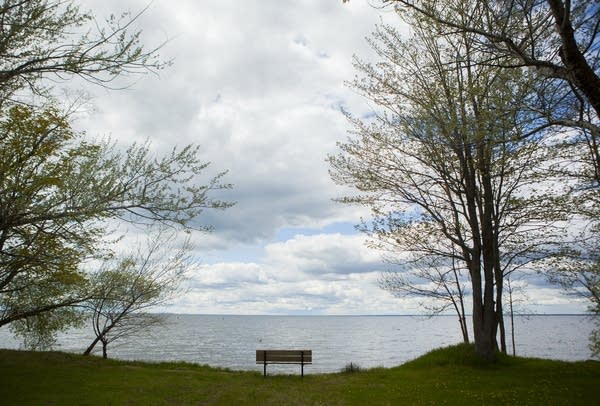Walleye decline prompts harvest cuts in Mille Lacs

Concern about walleye in Lake Mille Lacs where the population is at its lowest level in decades has prompted regulators to cut the total amount of walleye that can be taken from the lake.
It's a measure aimed to balance the needs of the lake's ecosystem and the region's economy.
The Department of Natural Resources and the tribes that co-manage Mille Lacs don't like the trend they're seeing regarding the lake's walleye population.
"There seems to be a decline in the walleye population, especially young walleye," said Sue Erickson, a spokesperson for Great Lakes Indian Fish and Wildlife Commission, which represents eight bands with treaty fishing rights at Mille Lacs.
Create a More Connected Minnesota
MPR News is your trusted resource for the news you need. With your support, MPR News brings accessible, courageous journalism and authentic conversation to everyone - free of paywalls and barriers. Your gift makes a difference.
"As a consequence of that the decision has been made to reduce our harvest ... the biologists feel that efforts have to be made right now to prevent further decline," Erickson said.
This year, 250,000 pounds of walleye can be harvested from the lake — down from the half-million pound limit set last year. About 70 percent of this year's limit is allocated for sport anglers. The rest goes to the tribes that also fish the lake.
While the reduced limit is significant, in reality it is rare for sport anglers and the tribes to actually catch the total amount of walleye allowed. Data from the DNR show the state has exceeded its walleye allocation five times since 1997; the tribes have never gone over theirs.

Cutting the harvest level in half is a bold decision. There are probably many reasons why the walleye population dropped, said Don Pereira, a senior fish biologist with the DNR. Part of problem is the way the lake has been managed, he said.
The DNR uses "slot limits" to protect certain sizes of fish. Under current regulations, anglers must throw back walleye between 17 and 28 inches long. Pereira said that means walleye falling outside the protected size have probably been overfished.
"We kind of set up like a fishing mortality gauntlet and it's just too difficult for fish to survive through that window," he said.
Beyond that, Pereira said the way other fish have been managed in the lake creates a scenario of too many predators and not enough food, making young walleye a tasty snack for a smallmouth bass or passing northern pike.
Researchers use models to determine how well the walleye population is prospering. The models are in part based on a gill net assessment — a test performed by dipping nets into the lake and counting the fish that are caught.
Starting in April, both state and tribal researchers will conduct a more detailed census, which has not been done since 2008, said Mark Luehring, a fishery biologist with Great Lakes Indian Fish and Wildlife Commission.
"That'll give us a better idea of whether issues with the gill nets themselves are causing the population to look lower than it is, or if there's truly the decline that our models are showing," Luehring said.
It could take years for the Mille Lacs walleye population to recover, Pereira said. Going forward, he said the agency needs to figure out a way to better manage the lake.
For now, he said, the DNR must strike a balance that lets fishing continue but also allow the walleye to recover.
Pereira says the DNR is reviewing management strategies, but did not say whether changing or doing away with slot limits is an option. Nor is closing the lake to fishing entirely a realistic option, he said. It might help walleye rebound, but it would hurt the local economy.
"If we can avert an economic disaster, but still allow the population to build than that's a better solution than closure," Pereira said.
For the many resorts and fishing outfitters that rely on the tourism economy around Mille Lacs, the news is mixed.
Terry McQuoid is owner of McQuoid's Inn in North Isle and runs one of the largest fishing guild operations on the lake. He acknowledges the region's economy could take a hit this summer, but says the news should be put into perspective.
"Our walleye catch, even at this reduced number, is still going to be better than most any other lake in Minnesota," McQuoid said.
The DNR is scheduled in February to meet with business owners on the lake to discuss the changes.
